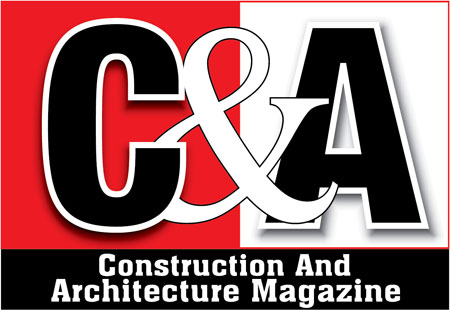Mr. T. Chandra Sekhar, the Director Technical at Aparna Enterprises Ltd (AEL)
How Advanced Concrete Solutions Enhance Strength, Sustainability, and Design

In the dynamic world of modern construction, the demand for specialized and diverse concrete solutions has reached new heights. Architects and construction experts are increasingly relying on advanced ready-mix concrete types to address the specific needs of various projects. These solutions not only bolster the strength and durability of structures but also elevate their aesthetic appeal and contribute to environmental sustainability.
High-grade concrete is indispensable for critical structural elements such as columns, beams, and foundations. Renowned for its exceptional strength and durability, this concrete is ideal for demanding applications like girders in bridges and railways, ensuring the longevity and stability of essential infrastructure. By opting for high-grade concrete, architects can design robust structures that stand the test of time.
Incorporating coloured concrete into a project brings a unique combination of visual appeal and structural integrity. Available in a broad spectrum of hues, this type of concrete is perfect for enhancing spaces like basements, pathways, and flooring surfaces. It not only adds aesthetic value but also guarantees long-lasting durability. Architects can utilize colored concrete to introduce distinctive design elements while maintaining the strength and reliability of traditional concrete. Stamped concrete further transforms outdoor spaces by merging vibrant colours with exceptional durability. It’s an ideal choice for creating visually striking and resilient areas such as patios, driveways, and walkways. This innovative material allows construction experts to craft unique, enduring designs that significantly enhance the overall appeal of any project.
High-volume fly ash concrete and Ground Granulated Blast Furnace Slag (GGBS) concrete are increasingly recognized for their superior resistance to chloride and sulfate attacks, significantly extending the lifespan of structures. These eco-friendly options make use of industrial by-products, thereby reducing carbon emissions and minimizing the heat of hydration, making them ideal for sustainable construction projects. By incorporating these materials, architects and builders can meet the rising demand for green building practices while ensuring the longevity and durability of their projects.
Lightweight concrete offers a practical solution for reducing dead loads and improving insulation properties, making it especially suitable for non-structural applications where weight reduction is crucial. Its excellent insulation capabilities also contribute to energy efficiency, making lightweight concrete an attractive option for architects and engineers focused on enhancing the sustainability and functionality of their designs.
In industrial settings, slab concrete is specifically engineered to withstand heavy loads, resist cracking, and endure wear and tear. This low-maintenance solution is perfect for areas exposed to high foot traffic, heavy machinery, and forklifts, ensuring durable and long-lasting industrial floors. Construction experts can rely on slab concrete to deliver robust and resilient flooring solutions that meet the rigorous demands of industrial environments.
Self-compacting concrete represents a significant leap forward in construction technology. Its unique properties allow it to flow and spread effortlessly without the need for mechanical vibration, making it ideal for use in congested areas where traditional methods are challenging to apply. This innovative material reduces noise, labour, and equipment needs while ensuring a smooth and consistent finish. Architects and builders can leverage self-compacting concrete to streamline construction processes, particularly in complex and densely populated sites.
Building on this innovation, smart dynamic concrete—an advanced form of self-compacting concrete—offers enhanced strength and durability. It is particularly effective for intricate structures and crowded spaces where conventional placement methods are difficult. This advanced material facilitates efficient and seamless construction, enabling architects and engineers to push the boundaries of design and functionality.
Fiber-reinforced concrete takes structural integrity to the next level by incorporating fibrous materials. Varieties such as Elasticrete with polypropylene fibers and DuctiCrete with steel fibers offer significant benefits, including improved impact strength, crack resistance, and enhanced mix cohesiveness. Polypropylene fibers are ideal for projects requiring a cohesive and resilient mix, while steel fibers are better suited for heavy-duty applications like pavements and industrial floors, providing higher flexural strength, toughness, and impact resistance. By leveraging fiber-reinforced concrete, construction experts can deliver projects that are both durable and adaptable to various demands.
Temperature controlled concrete is specifically engineered to regulate heat and maintain optimal workability, making it ideal for mass concreting and radiation-resistant applications. This type of concrete ensures consistent performance and durability, even in extreme weather conditions, making it a reliable choice for challenging environments. Architects and builders can depend on temperature-controlled concrete to maintain the integrity and quality of large-scale projects, even under harsh conditions.
By integrating these specialized concrete solutions into their projects, architects and construction experts can not only meet the precise demands of modern construction but also significantly enhance the overall quality, sustainability, and aesthetic appeal of their designs. Whether it’s creating robust infrastructure, designing visually stunning outdoor spaces, or addressing the stringent requirements of industrial settings, these advanced concrete types provide the essential tools for achieving exceptional results in today’s construction landscape


